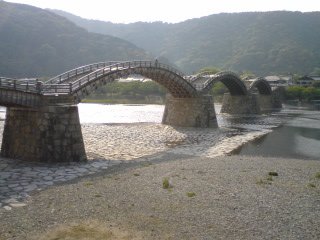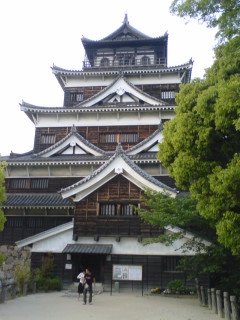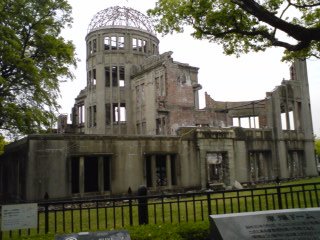When I was in Hiroshima, I made a short trip to the town of Iwakuni. There is a 5-arches wooden bridge crossing the Nishiki river. It’s the Kintai-kyô 錦帯橋 bridge.
It was built in 1673 by Kodama Kurôemon under an order from the local lord, Kikkawa Hiroyoshi. It was destroyed by a typhoon in 1950 and rebuilt in 1953. The bridge is 210 metres in length. It cost 300 Yen to cross it both ways.


